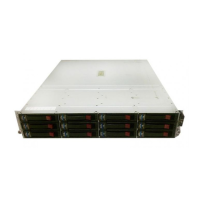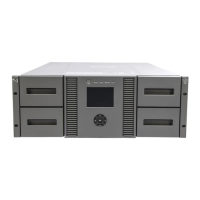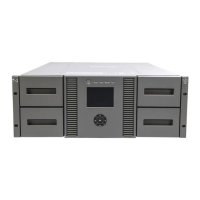To plan journals, see the following:
• Review journal specifications in “System requirements” (page 17).
• Review journal configuration in “Register journal volumes in a journal ” (page 50).
Data transfer speed considerations
The previous sections and the sections later in this chapter on Bandwidth discuss the amount of
data that must be stored temporarily in journals and transferred over the data path network. This
section discusses the speed that data must be transferred in order to maintain the Continuous Access
Journal system your are designing.
The ability of your Continuous Access Journal system to transfer data in a timely manner depends
directly on the following two factors:
• RAID group configuration
• Fibre Channel port configuration
Both of these elements must be planned to be able to handle the amount of data and number of
transactions your system will move under extreme conditions.
RAID group configuration
A RAID group can consist of physical volumes with a different number of revolutions, physical
volumes of different capacities, and physical volumes of different RAID configurations (for example,
RAID-1 and RAID-5). The data transfer speed of RAID groups is affected by physical volumes and
RAID configurations.
• The data transfer speed of a journal volume depends on the data transfer speed of the RAID
group to which it belongs. A RAID group can consist of one or more volumes, including journal
volumes.
• Journal volumes must be configured in RAID groups according to the group’s throughput
specification and your system’s peak write-workload. If write-workload exceeds the RAID
group’s throughput rating, then the number of RAID groups must be increased.
• Frequent read/write activity to non-journal volumes in a RAID group results in fewer read/writes
by journal volumes in the same RAID group. This can cause a drop in the data transfer speed
of journal volumes. To avoid this, place journal volumes and frequently accessed non-journal
volumes in different RAID groups.
Fibre Channel port configuration
The Fibre Channel ports on the P9500 have an IOPS threshold. Use the performance monitoring
information for the number of IOPS your production system generates to calculate the number of
Fibre Channel ports the Continuous Access Journal system requires.
Please see “Planning ports for data transfer ” (page 39) for a full discussion on the type and number
of Fibre Channel ports required for your system.
Planning journal volumes
The following information is provided to help you prepare journal volumes:
• Identify the journal volumes for your Continuous Access Journal system on primary and
secondary arrays. Journal volumes should be sized according to RPO and write-workload.
See “Sizing journal volumes ” (page 22) for more information.
• Journal volumes in the same journal can be of different capacity. A master journal volume
and the corresponding restore journal volume can be of different capacity.
24 Planning volumes and systems

